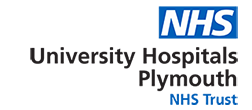DIEP Breast Reconstruction
Date issued: September 2025
For review: September 2027
Ref: A-685/SJL/Breast Care/DIEP Breast Reconstruction
PDF:DIEP Breast Reconstruction.pdf [pdf] 261KB
DIEP breast reconstruction can be performed in the immediate or delayed setting. This type of reconstruction is a free flap using your own abdominal skin and fat. It’s called DIEP because it uses deep blood vessels called the deep inferior epigastric perforators.
This handbook has been produced to provide you with specific post-operative information and practical advice following your breast reconstruction surgery.
What to expect after the operation
-
You will need to take painkillers when discharged home from hospital. It is important that you take these regularly. Some pain medication can cause constipation. Drinking plenty of fluids and eating fresh fruit and vegetables may help prevent this.
-
You will receive a pair of antiembolism stockings to wear 23 hours a day (removing only for washing) and should continue to wear these for 3 weeks after your surgery.
You will be given a blood-thinning injection every night whilst you are in hospital. You will need to continue these injections for 2 weeks in total and the ward staff will provide teaching on how to administer these. These are given to prevent a blood clot forming in either the legs (DVT) or lungs (PE).
-
The majority of patients are pleased with the results of the surgery. Occasionally, women feel very anxious about their treatment or have difficulty coming to terms with their new look because their breasts are not as they had imagined they would be or because they have suffered a complication. Please speak with your breast care nurse if you are experiencing any of the above.
Wound care
-
You will be discharged from hospital with simple post op dressings to your breast.
-
On your abdominal wound, you will have a PICO dressing. This is a dressing with a small battery pump which provides suction to the wound to promote wound healing, please check that “OK” is flashing green. If flashing red, please call the breast care nurses during our office hours. These dressings are only splashproof, so please don’t soak them in water.
-
You will have an appointment with the breast care nurse on the Primrose unit 1 week after your surgery to remove the dressings. We may need to apply another dressing and see you again if necessary.
-
Usually, you will have dissolvable stitches that do not need to be removed, although they may take several weeks or months to dissolve completely. Occasionally, as they dissolve, they may poke out of the skin and irritate slightly. If this happens, please contact the breast care nurses for advice. If for any reason non-dissolvable stitches were used, the nursing staff will arrange for them to be removed.
-
Please avoid placing hot water bottles, heat/cold pads and hot drinks on your reconstruction area. Due to numbness on the area there is a high risk of burns.
Scar massage
Scars take approximately 18 – 24 months to mature (i.e. become flatter, paler and softer). They are fragile and can be easily damaged if knocked. They often change in colour, dependent on the temperature.
After 4 weeks you can start to massage your scars daily. This is essential as it helps to soften the scars, prevent skin breakdown, improve appearance and stops the scars from sticking to underlying structures, which would reduce movement. You should use your fingertips to massage the scar lines in a circular motion. You can also massage straight across the scar.
You can lubricate the scars using a non-perfumed moisturising cream. You could also use a barrier, like a soft towel or wear gloves, at the beginning, if you feel uncomfortable touching your scars. You should start gently to get used to the massage but as soon as possible you should apply enough pressure to blanch or lighten the scar. If you are unsure, please ask a nurse or physiotherapist to demonstrate. You should carry out scar massage 3 to 4 times a day for 5 to 10 minutes each time. Try to build it into your normal daily routine. Please continue until the scars are soft, pale and flat.
Scars can be sensitive and will burn easily. Please ensure SPF is worn appropriately.
Support bra and underwear
You need to wear a supportive, front fastening, non-wired bra immediately after the operation, for 4-6 weeks day and night. This helps prevent the weight of the breasts pulling on the wounds and affecting the healing process. Please speak to the breast care nurse regarding appropriate bras with some available from companies such as M & S, Lipoelastic, Cancer Research UK.
You will need to wear high waisted supportive underwear for 4-6 weeks day and night. This will help prevent a seroma to your abdomen and provide support to your wounds. Seroma is a build up of fluid under the skin. Please contact the breast care nurses if you feel any swelling to your breast or abdomen. Normally a seroma will be absorbed by your body but occasionally we may need to drain the fluid off.
Bra fitting
We recommend that, three months following your breast surgery, you have a professional bra fitting undertaken. It is likely that at this stage you will have a change in size due to the decreased swelling and bruising and the natural droop of your tissue. Therefore, it is important that your bra is well-fitting and provides you with adequate support.
Bra fitting is available at most shops. But also available from Nicola Jane, a company with an online website but that also do local drop-ins in Tavistock and the Mustard Tree.
Resuming normal activities
-
The breast care nurses will provide you with the appropriate exercises for the surgery you have had. Including arm and abdominal exercises.
-
The length of time you need to take off work depends on the nature of your job but you will need at least 4-6 weeks.
-
You are advised to avoid strenuous exercise for a minimum of 6 weeks; then ask your nurses before progressing to any kind of exercise (avoid high impact)
-
You are advised not to drive for up to 4 weeks following surgery and only re-start when you can safely perform an emergency stop (car insurance might need to be informed of recent surgery)
-
Avoid heavy lifting, like hoovering and carrying heavy shopping.
Lifestyle Advice
Smoking/Vaping nicotine has a proven adverse effect on wound healing. Nicotine reduces the ability of the blood to carry enough oxygen to the tissues and the skin causing wound break-down and delayed healing. Therefore, please note this type of breast reconstruction is not offered to current smokers and anyone who has actively smoked in the last 3 months.
We recommend that you eat a healthy well-balanced diet to aid wound healing. Think of introducing protein and plenty of fibres into your diet. Drink plenty of water.
Studies have shown that physical activity tends to decrease significantly for many people after cancer diagnosis and treatment. Overall, this can affect your quality of life by impacting on the things that you enjoy doing. Being physically active can help lift your mood, giving you a focus to help improve your confidence.
There is also evidence highlighting that regular physical activity may help you to lower the risk of recurrence of some forms of breast cancer.
Regular exercise and physical activity can also help you to regain and maintain your strength and stamina after treatment.
It can also help reduce the risk of other problems such as osteoporosis, heart disease, weight issues and joint problems which are known side effects of some of the cancer treatments themselves.
Asymmetry
Following your breast reconstruction you may have some breast asymmetry. If you are conscious about this, please ask a nurse to provide you with a temporary soft prosthesis known as a “Softie”. This can be used until your wounds have healed fully and you either have further symmetrising surgery or can be fitted for a prosthesis.
Although you will be keen to move on to the next stage of your reconstructive journey, it is important to leave a certain amount of time between surgeries to guarantee adequate wound healing and to ensure your reconstruction has had time to settle. The decision to place you on the waiting list for follow up procedures will be made by your consultant in a follow-up out-patient appointment.
Nipple reconstruction is generally discussed at initial post op follow up and planned generally 3-6 months after initial reconstruction. Prosthetic nipples can be used in interim period. Information can be gathered regarding tattooing.
Follow up
If you have had a mastectomy as part of your cancer treatment, you will receive an appointment with the breast surgeon in the Primrose Breast Care centre 3-4 weeks after the operation. This appointment will be to receive the results of the tissue removed during surgery following a Multi-Disciplinary Team (MDT) discussion.
If you have had this reconstruction in the immediate or delayed setting you will have a 3 month follow up with the plastics consultants.
Useful contacts
-
The Mustard Tree Macmillan Cancer Support Centre Level 3 Derriford Hospital Plymouth PL6 8DH 01752 430060
-
Breast Cancer Now 0808 800 6000 or visit their website for support
-
Keeping Abreast 07493598384 or visit their website
If you have any concerns, you can contact the breast care nurses on 01752 431898 and they can arrange an appointment if needed. This includes if you have cosmetic concerns, or you would like to be seen by your breast surgeon again for consideration of symmetrising breast surgery.


